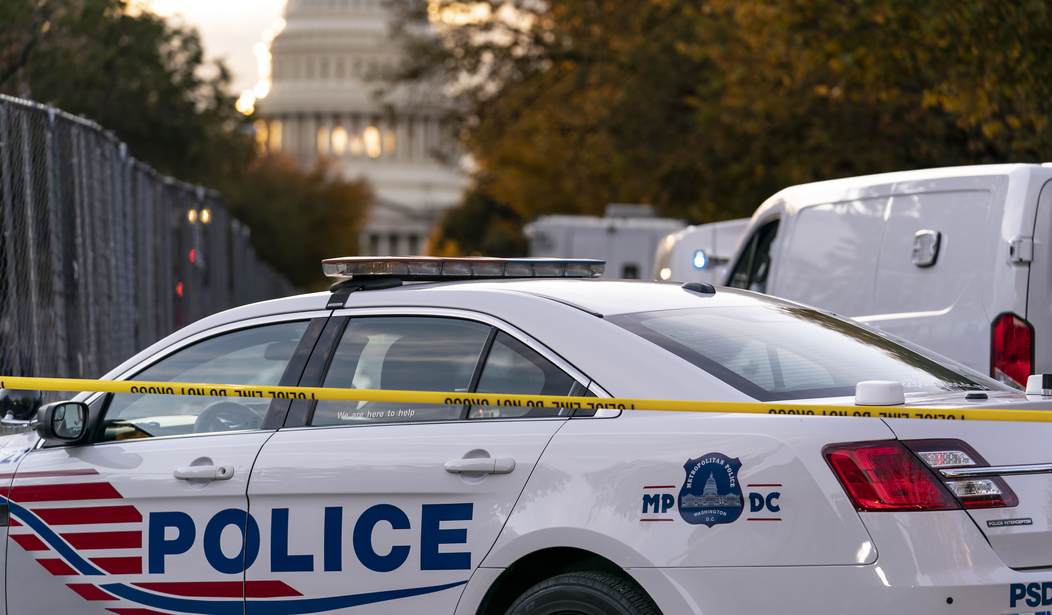As you’ve probably heard by now, Washington, DC is in the midst of a surge of violent crime, much of it connected to teens and even pre-teens. The situation is dire enough that Mayor Bowser declared a public emergency last month.
The mayor’s emergency order notes that in the first nine months of 2023, there were 458 arrests of juveniles for robbery, including carjacking, homicide, or assault with a dangerous weapon — a 10% increase from 2022. Data also shows that juveniles represent about one-third of the total arrests for carjackings this year, coming in at a staggering 151. FOX 5 asked for clarification on this data.
According to D.C. Police’s carjacking dashboard as of Monday, juveniles accounted of 66% of the carjacking arrests, with 863 carjackings reported so far this year.
Additionally, the Mayor’s Office says from January to October of this year, 97 juveniles have been shot — 15 fatally — and in just the last five weeks alone, five kids on court-ordered electronic monitoring have been killed.
The city has seen more murders this year than in any year for the past two decades:
At 250 murders so far this year, D.C. has seen a 34% increase in this specific crime compared to the same time last year.
7News On Your Side obtained data from the D.C. Office of the Chief Medical Examiner, which revealed this is the most murders since 2002 when the city saw 278 murders.
That story quoted above was published three weeks ago. The most recent numbers show the city is up to 261 homicides as of 12/18. Robbery is up 69% compared to last year which brings violent crime overall up 39 percent.
The Washington Post editorial board published an editorial today laying out solutions for this problem. Not surprisingly, the top idea is more cops.
This year has seen the most homicides in the District since 2002, along with a surge in robberies and carjackings. Crime is topic A in neighborhood chat groups, Capitol Hill staff meetings, and among restaurant and small-business owners. While police alone cannot solve all the issues, it’s clear that the Metropolitan Police Department — currently fielding just 3,328 police officers — needs to be bigger. A decade ago, then-Police Chief Cathy L. Lanier warned of increased danger if ranks fell below 3,800 officers. The city is learning that painful lesson now.
To help with recruiting, Mayor Muriel E. Bowser (D) bumped up the force’s signing bonus to $25,000. She needs to reexamine pay overall. The annual starting D.C. police salary is $66,419, which is about $10,000 below the median annual salary in the city and about $15,000 below the average FBI starting pay range. The MPD is wisely using civilians in office roles and should continue finding ways to keep sworn officers where they can do the most good. But staffing won’t be fixed overnight in part because a crash hiring spree would probably lead to lowered standards. The D.C. force — and many others struggling with depleted ranks — have to embrace smart policing with data and technology.
Also not surprising, the editorial says nothing about why DC is so short on officers and what led up to this “painful lesson.” No mention is made of the DC City Council’s decision to defund the police back in 2020 over the objections of the police and the mayor.
D.C. lawmakers on Thursday advanced measures to cut $15 million from the police department budget, a change that defund-the-police activists dismissed as insufficient and the police chief warned could result in the loss of hundreds of officers.
The D.C. Council’s Committee on the Judiciary and Public Safety unanimously approved a plan to reduce the $533 million police budget proposed by Mayor Muriel E. Bowser (D) by cutting vacant positions and rejecting an expansion of the police cadet program. The committee also voted to cut the department’s capital budget and reallocate funds to alternative violence-reduction programs…
D.C. Police Chief Peter Newsham declined to discuss the council’s actions at length but said the cuts would force a hiring freeze that could reduce the 3,800-member force by 200 officers or more.
Bowser had planned to increase the police department to 4,000 officers by 2023.
The point is, we didn’t have to be here now. The city was heading toward more officers back in 2020 when the city council insisted on taking this path. And what was the Washington Post doing at the time? It was publishing “defund the police explainers like this one:
Since George Floyd’s death, a long-simmering movement for police abolition has become part of the national conversation, recast slightly as a call to “defund the police.” For activists, this conversation is long overdue. But for casual observers, this new direction may seem a bit disorienting — or even alarming.
Be not afraid. “Defunding the police” is not as scary (or even as radical) as it sounds, and engaging on this topic is necessary if we are going to achieve the kind of public safety we need. During my 25 years dedicated to police reform, including in places such as Ferguson, Mo., New Orleans and Chicago, it has become clear to me that “reform” is not enough. Making sure that police follow the rule of law is not enough…
Police abolition means reducing, with the vision of eventually eliminating, our reliance on policing to secure our public safety.
“Be not afraid,” the opinion piece said. But here we are a few years later and it turns out we were right to be afraid. This has been a disaster and it was entirely avoidable.








Join the conversation as a VIP Member